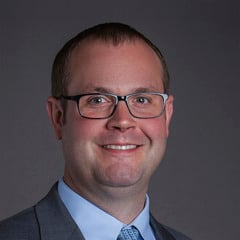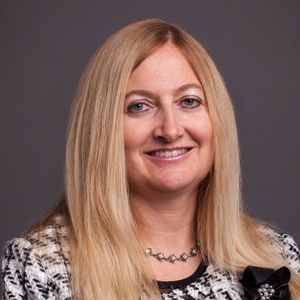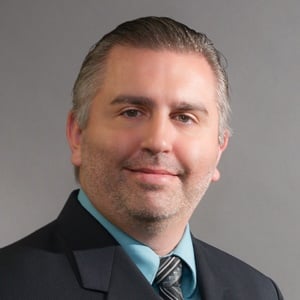Today’s multiservice FAN promises to support a wide range of industry applications, including DMS, AMI, demand response, DER and advanced distribution automation. This wide range of applications drives both the scale and critical nature of their supporting FAN. The scale and security challenges in the FAN are also independent of the variety of commercially available technologies (e.g., pLTE, WiSUN, LORA, NB-IOT, etc.). In this session, the challenge of deploying and supporting a secure FAN that could envelop a large geography and include tens of thousands of gateways will be outlined. The need for operational automation will be established with use case reviews, including OpEx and time to deploy analysis. Finally, the impact of limiting direct human interaction on network reliability and cybersecurity of the multiservice FAN will be reviewed. Co-presenting with Brad Holt, AEP.
Join Us Virtually at the Conference
This year’s conference has moved from Providence, Rhode Island, to a virtual experience, but it will still feature experienced industry professionals discussing timely topics across eight tracks. Featured speakers and moderators from Burns & McDonnell will share their insights on field area networks, broadband technologies, cybersecurity and more.
All times below in Eastern.
FAN Network Orchestration: Secure Automated Device Deployment and Operation
Wednesday, Aug. 26 | 1:30-2:30 p.m. | Wireless Communications Infrastructure
5G/4G LTE Cellular and Field Area Networks: Secure Orchestration, Automation and Deployment for Extreme Device Densities
Wednesday, Aug. 26 | 3-4 p.m. | Wireless Communications Infrastructure
The industrywide effort to improve reliability and efficiency of the grid is forcing the evolution of FANs to an unprecedented scale. This session incorporates three topics:
- How to build a multiservice FAN to support a range of critical applications including DMS, AMI, DR, DER and DA. The time per site, per pole, setting up, tracking and deploying devices must be reduced. The scale and security challenges in the FAN are independent of available technologies.
- Hardware supporting “zero-touch” (ZT) provisioning, configuration and management is essential to improve efficiency while advancing security requirements for a connected world. Achieving advanced provisioning and security requires solutions capable of secure boot via trusted platform management (TPM) and communication utilizing public key infrastructure (PKI).
- Network orchestration will provide automation needed to reduce OpEx and time to deploy and limit human interaction, increasing reliability and security.
Disruptive Technologies
Monday, Aug. 31 | Noon-1 p.m. | Broadband
This panel will discuss the disrupting technologies and new requests of the utility telecom organizations for LTE, GPON, rural broadband and smart cities. The utility telecom organizations are being asked to review installing LTE networks to support the operational needs of their organization. Public or private networks for their LTE networks, frequencies, operational changes associated with it, and training of staff are all facets the utility must review. GPON is a technology that utilities are seeing used for distribution. Rural broadband is being brought to utilities to implement for underserved rural communities. The size of the utility is one of the many factors in serving underserved communities. Lastly, smart cities are coming into the utility service space since the utility has rights-of-way and crews to support the services.
Panelists include Lee Ayers, Mid-Carolina Electric Cooperative; Larry Butts Jr., Southern Company; David Standley, AEP and Kevin Hursey, Duke Energy.
Selection and Implementation of Asset Management and Detective Cybersecurity Controls
Wednesday, Sept. 2 | Noon-1 p.m. | Security
Asset management is a key component of a strong cybersecurity program. Without a clear understanding of the devices connected to your plant, substation or corporate network, it is impossible to know where to focus. Similarly, detective controls provide visibility into the health and functionality of those assets. There are many cybersecurity solutions that claim to provide both capabilities, but in practice they have a wide range of effectiveness. This presentation will provide notes from the field regarding experiences in selecting and implementing cybersecurity solutions for utilities. There are many options, and determining the right fit for an organization requires an understanding of both product capabilities and use case requirements. From conducting a proof of concept of competing tools to implementing a tool and measuring its effectiveness, several case studies will be presented based on real-world experience.
A Smart City Connected Community Roadmap
Thursday, Sept. 3 | Noon-1 p.m. | The Utility of the Future
The alignment of utility priorities and controls is critical to achieving a meaningful impact on the ecosystems of smarter community development. The cornerstone vision for building a strong community should evolve around the empowerment of connectivity for the conservation of critical resources. The expansion and integration of fiber networks and smart controls should pursue conservation, connectivity and community. The conservation of natural resources and preservation of the natural environment is central to the mission. Goals are focused on water conservation, power efficiency and CO2 emission reductions. Connectivity is the critical infrastructure provided over fiber networks to allow the physical and digital connectivity to engage the outside world. A great community provides a better place to work, live and play. The use of smart devices and integrated technology helps to create special places that bring people together.

✖
Send Us a Note






